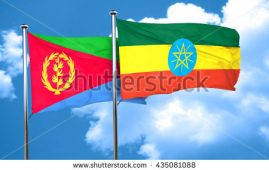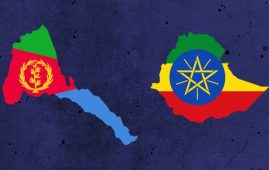The severe drought …is leading to a considerable increase in complex, multi-directional migration flows…Those population movements involve not only refugees and asylum seekers but large numbers of migrants and pastoralists who have little choice but to move along numerous complex migration routes, initially from rural to urban areas and for many tens of thousands, across international borders to neighbouring countries.
…increased population movements have been observed from drought affected areas in southern and central Somalia towards the capital Mogadishu,…Displaced Somalis are also moving along perilous land routes from impoverished rural areas towards Somaliland and the self declared autonomous state of Puntland. Others continue their journey towards neighbouring Djibouti and across the treacherous Bab el Mandeb (Gate of Grief in Arabic) to Yemen and the Gulf States.
Recent reports in the Sudanese press of Somalis drowning in the Red Sea south of the city of Port Sudan could indicate the establishment of a new hazardous migration route from Somalia, Eritrea and Ethiopia to Sudan’s Red Sea State and then onto Saudi Arabia.
The situation in Ethiopia is further complicated by the return of Ethiopian migrants from Yemen, where evacuation operations started in November 2010 resulted in the return of thousands of individuals to date…..The impact of these returns to resource-constrained communities has not yet been fully assessed, but it can be estimated that about 30 per cent returned to drought affected areas.
********************
Drought Related Migration on the Increase in the Horn of Africa
Horn of Africa – The severe drought which is affecting vast areas of Somalia, Kenya, Ethiopia and Djibouti is leading to a considerable increase in complex, multi-directional migration flows, both within and across international borders, according to IOM missions in the region.
Those population movements involve not only refugees and asylum seekers but large numbers of migrants and pastoralists who have little choice but to move along numerous complex migration routes, initially from rural to urban areas and for many tens of thousands, across international borders to neighbouring countries.
Although information on many of these routes remains sketchy, increased population movements have been observed from drought affected areas in southern and central Somalia towards the capital Mogadishu, where heavy rains over the past few days have wrecked havoc among vulnerable displaced persons.
Displaced Somalis are also moving along perilous land routes from impoverished rural areas towards Somaliland and the self declared autonomous state of Puntland. Others continue their journey towards neighbouring Djibouti and across the treacherous Bab el Mandeb (Gate of Grief in Arabic) to Yemen and the Gulf States.
Recent reports in the Sudanese press of Somalis drowning in the Red Sea south of the city of Port Sudan could indicate the establishment of a new hazardous migration route from Somalia, Eritrea and Ethiopia to Sudan’s Red Sea State and then onto Saudi Arabia.
The situation in drought-affected regions of Somalia has led to a major increase of people seeking assistance in Ethiopia and Kenya, with some 50,000 new arrivals reported in June. Over the past three weeks, some 11,000 people have arrived in Ethiopia and more than 8,600 in Kenya, with daily arrivals now averaging 2,000 in Ethiopia and 1,200 in Kenya.
In Ethiopia, where the drought directly affects an estimated 4.5 million people, pastoralist communities are particularly in need of assistance because of the weakening or the death of their livestock. Their cross border movements in search of water and pasture for their livestock are creating a higher risk for resource-based conflict and further displacement, particularly in the drought-affected Northern Kenyan districts of Turkana, Wajir and Mandera, where Global Acute Malnutrition now exceeds 30 per cent among children, pregnant and lactating women.
The situation in Ethiopia is further complicated by the return of Ethiopian migrants from Yemen, where evacuation operations started in November 2010 resulted in the return of thousands of individuals to date. Major return areas are Oromiya, Tigray, and the Southern Nations, Nationalities and People’s Region (SNNPR) and Amhara regions, which are experiencing drought, crop failure and a dramatic increase in food and fuel prices.
The impact of these returns to resource-constrained communities has not yet been fully assessed, but it can be estimated that about 30 per cent returned to drought affected areas.
"Drought related migration is exacerbating an already complex situation of displacement and movement, triggered by conflict and instability and the returns of many Ethiopians and Somalis from Yemen," says IOM’s Director of Operations and Emergencies Mohammed Abdiker. "Drought recognises no borders. The response to the current crisis has to take into account internal and cross border mobility as a survival strategy for large populations."
IOM and UN partners have been working with governments in the Horn and East Africa to facilitate safe movement of pastoralists across border regions as a climate change coping mechanism.
The Security in Mobility (SIM) initiative called on regional governments to develop a policy to facilitate the safe movement of pastoralists within their countries and across borders using a collaborative approach that encompasses provision of humanitarian assistance, provision of basic services, facilitated migration and comprehensive security initiatives.
"Of all the key mitigation and coping mechanisms, mobility stands out as the most essential for pastoralists," says IOM’s Abdiker. "No country in the region can singlehandedly tackle the complex challenges of climate change and migration. A concerted regional effort is therefore urgently needed."






irvine windshield replacement
Groovy pics! irvine windshield repair